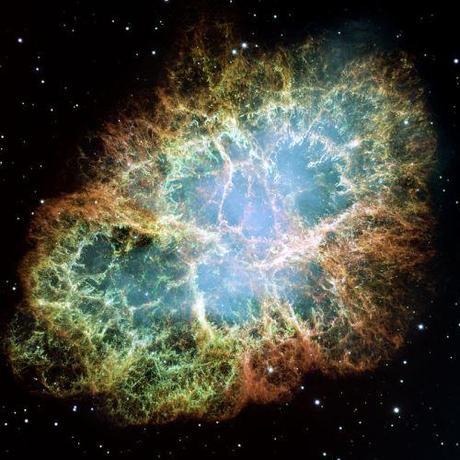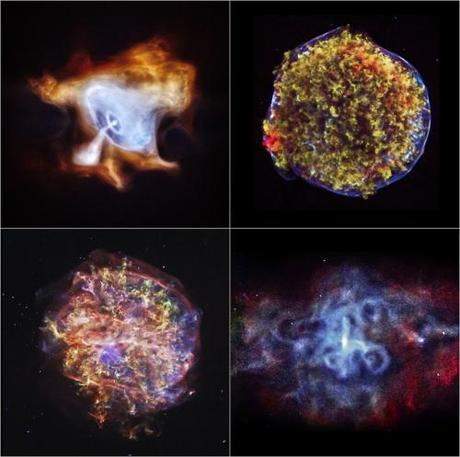He counts the number of the stars;
He calls them all by name.
Great is our Lord, and mighty in power;
His understanding is infinite.
-Psalm 147:4-5

A supernova is a massive star exploding at the end of its life. The explosion creates spectacular glowing debris fields called supernova remnants.
The Crab Nebula is a supernova remnant and pulsar wind nebula in the constellation of Taurus, part of the Perseus Arm of the Milky Way galaxy. Located at a distance of about 6,500 light-years from Earth, the nebula has a diameter of 11 light years and expands at a rate of about 1,500 kilometers (932 miles) per second.
First recorded by Chinese astronomers in 1054, the Crab Nebula was observed later by English astronomer John Bevis in 1731 and is the first astronomical object identified with a historical supernova explosion.
At the center of the nebula lies the Crab Pulsar, a neutron star 17-19 miles across with a spin rate of 30.2 times per second, which emits pulses of radiation from gamma rays to radio waves.

Crab Nebula supernova remnants
To celebrate the 15th anniversary of the Chandra X-ray Observatory, NASA released four new images of the Crab Nebula supernova remnants. These supernova remnants are very hot and energetic and glow brightly in X-ray light, which allows Chandra to capture them in exquisite detail.
Chandra, one of NASA’s current “Great Observatories,” along with the Hubble Space Telescope and Spitzer Space Telescope, is specially designed to detect X-ray emission from hot and energetic regions of the universe.
On July 23, 1999, NASA’s Chandra X-ray Observatory was launched into space aboard the Space Shuttle Columbia — the largest satellite ever launched by the shutter. Since its deployment 15 years ago, Chandra has helped revolutionize our understanding of the universe through its unrivaled X-ray vision. Orbiting far above Earth’s X-ray absorbing atmosphere at an altitude up to 139,000 km (86,500 mi) allows for Chandra’s long observations unobscured by Earth’s shadow.
With its superb sensitivity and resolution, Chandra has observed objects ranging from the closest planets and comets to the most distant known quasars. It has imaged the remains of exploded stars, or supernova remnants, observed the region around the supermassive black hole at the center of the Milky Way, and discovered black holes across the universe. Chandra also has made a major advance in the study of dark matter by tracing the separation of dark matter from normal matter in collisions between galaxy clusters. It also is contributing to research on the nature of dark energy.
Source: NASA.gov
For Chandra images, multimedia and related materials, visit: http://www.nasa.gov/chandra
H/t FOTM’s Igor
~Eowyn

